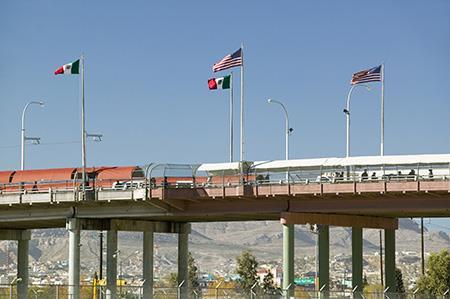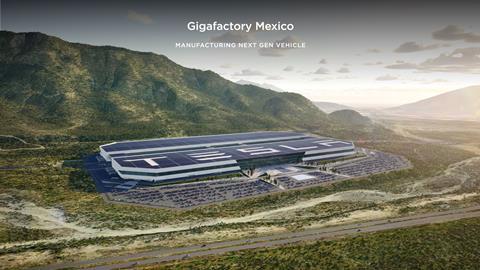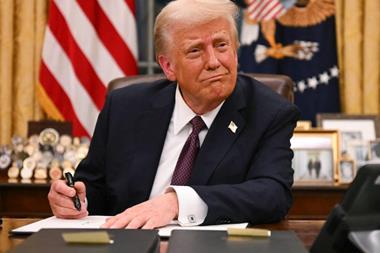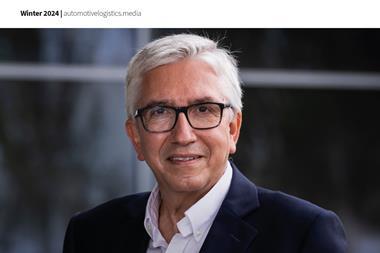With the US presidential election having been called in favour of a Trump win, the North American automotive logistics industry is looking at the potential impacts the vote could have on the US-Mexico border and its trade, particularly because of the trend of nearshoring, Chinese EV imports and with Mexico having become one of the largest auto producers globally.

This article was updated on November 6
The election has now been called as a Trump win, leaving the North American supply chain facing even more uncertainty.
In the lead up to the election both candidates had taken stances on US-Mexico trade, particularly given that the United States-Mexico-Canada free trade agreement (USMCA) is due for review in 2026.
Mexico is now the seventh largest vehicle producer in the world at 3.8m units – with 3.3m of those destined for overseas markets – while it is also the 12th largest seller of light vehicles globally.
The importance of the USMCA
The USMCA was reached in 2018 under former president Donald Trump and made rules on the content of a vehicle more complex. Vice-president Kamala Harris voted against the USMCA as a then senator. The USMCA replaced the old North American Free Trade Agreement (Nafta) and the provisions included new rules of origin (ROO) requirements, which were updated to improve the distribution of supply chain benefits between the US, Mexico and Canada.
These rules required more parts and labour value to originate from within North America to qualify for preferential treatment. According to the Office of the United States Trade Representative report to Congress on the operation of USMCA, the deal has had a “positive economic impact” on the North American automotive industry.
Trend of nearshoring in Mexico

Mexico has been a hotspot for the EV and battery supply chain in recent years, with OEMs such as BMW nearshoring and localising battery supply chains in the country. Other firms made investments during the back end of 2022, with Pirelli announcing an additional €114m ($114m) investment in its Silao plant, in the Puerto Interior industrial hub in Guanajuato state in November. In the same month, logistics provider RPM launched operations in Mexico, providing strategic planning, network design, capacity planning, information technology and transport through its cross-border logistics service.
Chinese automakers have also been using Mexico as a nearshoring location. Back in 2021, Chinese OEM GAC began exporting vehicles to Mexico in its first major push to breakthrough into the North American market. Although they were shipped under the Dodge brand, a division of Stellantis, the SUVs were built on GAC’s GS5 vehicle design and made at its factory in Hangzhou.
OEMs taking action ahead of the election
Ahead of the election, OEMs have already taken action to try to avoid uncertainty around Mexican tariffs, with the likes of Tesla having paused its plans to build a new gigafactory in the country until after the election, in light of Donald Trump’s pledge to impose a 100% tariff on Mexican-made vehicles.

Meanwhile, Mexico’s deputy economy minister said earlier this month that GM will swap out imports to Mexico for production in the country, and the government is also in talks with Stellantis to follow suit.
Chinese OEM BYD is planning to ramp up sales of EVs in Mexico, expecting to sell 100,000 EVs in the country next year. Recent reports had speculated that the OEM had stopped scouting the country for a new plant location until after the presidential election, but BYD denied postponing any decision regarding its planned Mexico factory. The company is expected to announce the location of its Mexico factory by year end.
Companies like VW, Nissan and BMW have publicly committed to maintaining Mexico as a critical production hub, even amidst political uncertainties.
As Mexico’s automotive industry stands at a pivotal crossroads, the Automotive Logistics & Supply Chain Mexico 2024 conference – taking place 12-14 November in Mexico City – invites you to join the conversation. With over 550 industry leaders converging to explore essential themes like nearshoring, digital transformation and supply chain resiliency, this is your opportunity to delve into the challenges and opportunities shaping the future of logistics.

























![Global[1]](https://d3n5uof8vony13.cloudfront.net/Pictures/web/a/d/s/global1_726550.svgz)














No comments yet